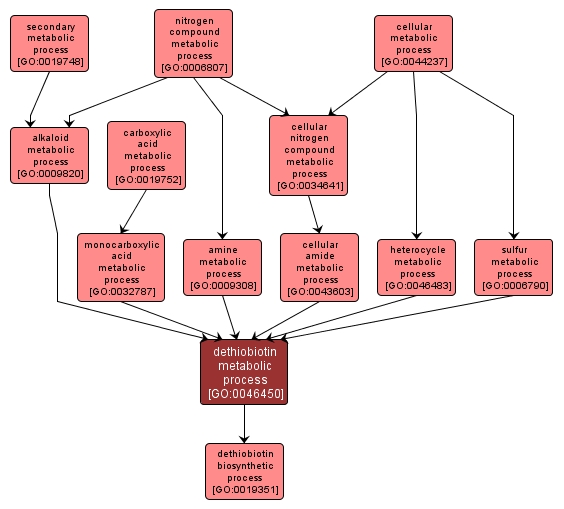GO TERM SUMMARY
|
| Name: |
dethiobiotin metabolic process |
| Acc: |
GO:0046450 |
| Aspect: |
Biological Process |
| Desc: |
The chemical reactions and pathways involving dethiobiotin, a derivative of biotin formed by replacing the sulfur atom by two hydrogen atoms. |
Synonyms:
- dethiobiotin metabolism
- desthiobiotin metabolic process
- desthiobiotin metabolism
|
|

|
INTERACTIVE GO GRAPH
|














